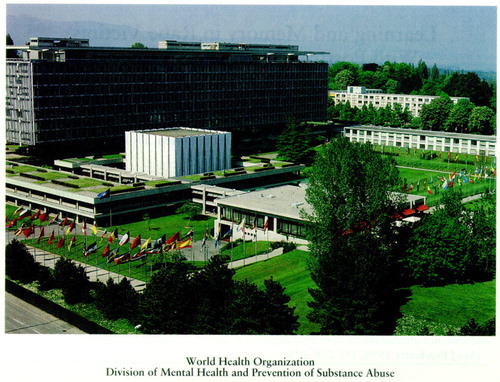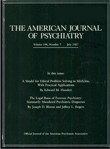World Health Organization Division of Mental Health and Prevention of Substance Abuse
The World Health Organization (WHO) was established in 1948 as a specialized agency of the United Nations (UN) with primary responsibility for international health matters and public health. Although clearly recognized in the WHO constitution as a major component of public health programs, mental health has for a long time had only minimal infrastructural support in the organization. The Mental Health Unit of WHO was composed of a chief, first with only one staff member in support, and then with two. The unit has had the support of consultants and eventually grew to a total strength of four staff members; it stayed at that level until 1970. The successive heads of the unit—Drs. G. Hargreaves (United Kingdom), E. Krapf (Argentina), P. Baan (Netherlands), B. Lebedev (USSR), and F. Hassler (United States)—have each left an imprint on the structure of the program, which, however, remained modest in size. Dr. F. Hassler was succeeded by Dr. N. Sartorius (then of Yugoslavia), who was until then responsible for the epidemiological and social psychiatry projects. Shortly after Dr. Sartorius became the head of the Mental Health Unit, the program was elevated to the level of an office (in 1974), the office was soon expanded further, and two additional tasks have been added to its mandate—the concern for psychosocial aspects of health and the program of drug dependence. The office became the Division of Mental Health in 1977, and this elevation in status meant that the mental health program was recognized as one of the 12 major programs of the organization. The growth of the program at the WHO Headquarters in Geneva was accompanied by two other significant expansions: first, by the appointment of a regional advisor for mental health in each of the WHO regional offices and second, by a major expansion of the network with which the new division collaborated. The number of collaborating centers designated by WHO grew from less than 10 to more than a hundred; the Expert Advisory Panels on Mental Health, Drug Dependence, and Neuroscience expanded their scope and soon included a large majority of the most prominent leaders in psychiatry from 80 countries (1). Several WHO-coordinated international multicenter studies (e.g., the International Pilot Study of Schizophrenia, the International Study of Depressive Disorders) were initiated and were path makers by size, complexity, scope, and scientific questions that they addressed. In addition to producing scientific results, they provided evidence about the feasibility of international collaboration in psychiatry (2).
The current Director, Dr. J.A. Costa e Silva (Brazil) (appointed in 1994), has further strengthened the WHO Division of Mental Health by being able to facilitate reintegration of the Programme on Prevention of Substance Abuse (separated from the division in 1990). This has been reflected in the new name of the division (i.e., Division of Mental Health and Prevention of Substance Abuse), as well as in its new structure, comprising two programs and eight units. Under Dr. Costa e Silva's leadership and together with the UN and other UN agencies, a global initiative named Nations for Mental Health has been launched, aiming to improve the mental health and psychosocial well-being of the world's underserved populations. Today this large international project is guiding WHO's endeavors in the field of mental health toward the next century.
Address reprint requests to the World Health Organization, Division of Mental Health and Prevention of Substance Abuse, 1211 Geneva 27, Switzerland. Photograph courtesy of WHO Archives.

1. World Health Organization: The Mental Health Programme of WHO. Geneva, WHO, 1990Google Scholar
2. World Health Organization: Research Activities in WHO's Mental Health Programme. Geneva, WHO, 1992Google Scholar



